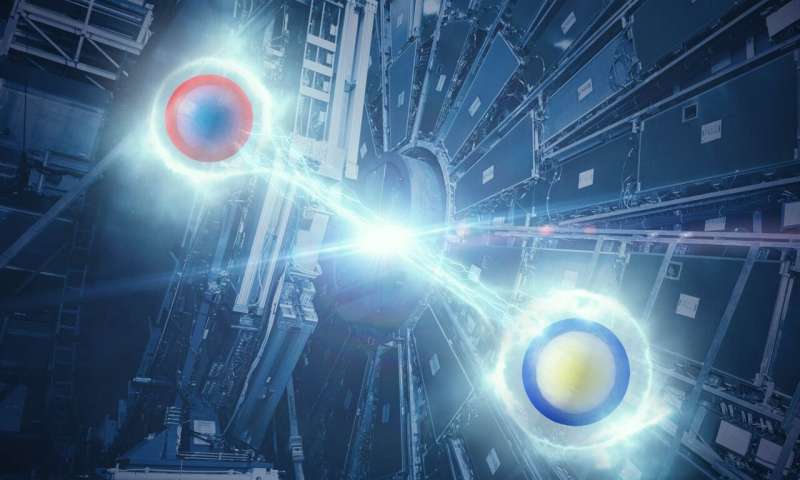This article has been reviewed according to Science X's editorial process and policies. Editors have highlighted the following attributes while ensuring the content's credibility:
fact-checked
trusted source
proofread
Could we ever harness quantum vacuum energy?

The fabric of spacetime is roiling with vibrating quantum fields, known as vacuum energy. It's right there, everywhere we look. But could we ever get anything out of it?
We can even calculate the strength of this vacuum energy. When we apply the rules of quantum mechanics to determine how much the fields vibrate in isolation, we get…infinity. That's right, there's an infinite amount of energy filling every bit of spacetime. That's because there's no limit to the amount of vibrations that these fields can have. Small vibrations, medium vibrations, and big vibrations are all happening in every quantum field simultaneously.
Wait, wait—how can the fields have infinite energy but still have more energy to produce particles? To answer this question we can turn to a clever experiment designed by the Dutch physicist Hendrik Casimir.
If you take two metal plates and stick them really, really close together, the quantum fields between those plates must behave in a certain way. The wavelengths of their vibrations must fit perfectly between the plates, just like the vibrations on a guitar string have to fit their wavelengths to the length of the string. In the quantum case, there are still an infinite number of vibrations between the plates, but there are not as many infinite vibrations between the plates as there are outside the plates.
Using some clever bits of mathematics, we can subtract the two kinds of infinities and arrive at a finite number. This means that there really are more quantum vibrations outside the two plates than there are inside the place. This leads to the conclusion that the quantum fields outside the plates push the two plates together, something called the Casimir effect. We can measure this effect and verify that the quantum fields actually do exist.
All this theory and experiment results in a startling conclusion. All the physics of the world, every interaction, every process, and action, takes place on a stage filled with an infinite amount of vacuum energy. As weird as this picture is, it's the result of decades of investigation into quantum theory.
Right now, we have no way of accessing this energy and doing anything useful with it. That's because it is the lowest energy state in the universe. To get work done, you have to have differences in energy, you need to pull energy from one place, transform it, and put it somewhere else.
We can't pull from the vacuum energy because there's nowhere lower for the vacuum energy to go. It's like trying to get an elevator to go beyond the lowest level in a building—it stops at the ground floor because there are no more floors beneath it.
When it comes to the Casimir effect, we had to put energy into the system to arrange the plates together in the first place. When the plates start moving, we're simply getting back the energy that we put in, with no net gain in energy production.
There are many ideas in the science fiction universe that propose using vacuum energy to power a starship or other advanced kind of propulsion. While those ideas run counter to established physics, we must admit that we do not fully understand all of physics…especially the vacuum energy. The biggest clue that we're doing something wrong has to do not with subatomic scales, but with cosmic.
In the late 1990s, astronomers discovered that the expansion of the universe is accelerating. The simplest explanation for this accelerated expansion is the vacuum energy of the universe. But because we can measure the expansion rate, we can use that to estimate the total amount of vacuum energy, and we get around 6 x 10-10 joules in every cubic meter of space.
That's…not infinity. So we have a problem. On one hand, we have a set of subatomic calculations, predictions, and measurements that tell us that there's an infinite amount of vacuum energy. On the other hand, we have a cosmic measurement that tells us that the amount of vacuum energy is really, really small.
What's going on? We have no idea. It's one of the greatest unsolved problems in modern physics. If we want to find a way to exploit the vacuum energy, then first we have to understand what it truly is. Whatever we find there will involve new kinds of physics, and who knows what new physics will unlock for us.
Provided by Universe Today





















